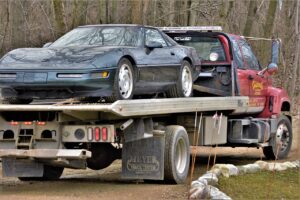The LED grow light industry is at the forefront of agricultural innovation, providing solutions that optimize plant growth, enhance photosynthesis, and increase yield in controlled environments. However, as this industry continues to evolve rapidly, it also faces a dynamic regulatory landscape. Manufacturers, suppliers, and users of LED grow lights must navigate these changes to remain compliant, competitive, and innovative. Understanding and staying ahead of regulatory changes is not just about compliance—it’s a strategic advantage in the burgeoning market of indoor and precision agriculture.
The Importance of Regulatory Awareness
Regulatory standards for LED grow lights encompass safety, energy efficiency, electromagnetic compatibility, and environmental impact. These regulations can vary significantly across different regions and are subject to change as new research emerges and technologies advance. Staying informed about these regulatory changes is crucial for several reasons:
- Compliance and Market Access: Adherence to regional and international standards ensures that products can be legally sold and used in target markets. This avoids costly recalls, legal issues, and potential bans.
- Product Quality and Safety: Regulations are designed to protect consumers and ensure the safety and reliability of LED grow lights. Compliance enhances product quality and builds consumer trust.
- Competitive Edge: Companies that proactively adapt to regulatory changes can innovate more quickly, offering products that meet or exceed current standards and setting the pace in the market.
Strategies for Staying Ahead of Regulatory Changes
- Active Participation in Industry Associations: Engaging with industry associations and regulatory bodies allows companies to gain early insights into potential regulatory changes and contribute to the development of standards that reflect the latest technological advancements.
- Investment in Research and Development (R&D): A strong R&D program can not only anticipate regulatory trends but also drive innovation, ensuring products exceed the minimum compliance requirements and offer additional value to consumers.
- Continuous Training and Education: Regular training programs for staff in regulatory affairs, product development, and compliance departments ensure that the entire team is aware of current and upcoming regulatory changes.
- Collaboration with Certification Bodies: Working closely with certification bodies and third-party testing laboratories can streamline the compliance process, providing access to expertise and reducing the time to market for new products.
Navigating Global Regulatory Landscapes
Given the global nature of the LED grow light industry, companies must navigate a complex web of regulations that vary by region:
- North America: In the United States, the Environmental Protection Agency (EPA) and Department of Energy (DOE) regulate aspects of energy efficiency, while safety standards may fall under UL certification. Canada has similar requirements, with Standards Council of Canada (SCC) accreditation playing a key role.
- Europe: The European Union’s CE marking indicates compliance with health, safety, and environmental protection standards. Additionally, the RoHS directive limits hazardous substances in electrical and electronic equipment.
- Asia: Countries like China and Japan have their own regulatory frameworks, with China Compulsory Certification (CCC) and the Japan Electrical Safety & Environment Technology Laboratories (JET) certification being notable examples.
Conclusion
The LED grow light industry’s regulatory environment is both a challenge and an opportunity. By staying ahead of regulatory changes, companies can ensure compliance, foster innovation, and maintain a competitive edge. This proactive approach not only supports business growth but also contributes to the development of sustainable, efficient, and safe agricultural technologies. As the industry continues to grow, the commitment to understanding and adapting to regulatory requirements will be key to shaping its future.
At WiringLabs, we understand the importance of staying informed and agile in the face of regulatory changes. Our dedication to compliance, quality, and innovation positions us as a trusted partner in the LED grow light industry.
If you need custom wiring harness or cable assemblies, feel free to contact WiringLabs.



